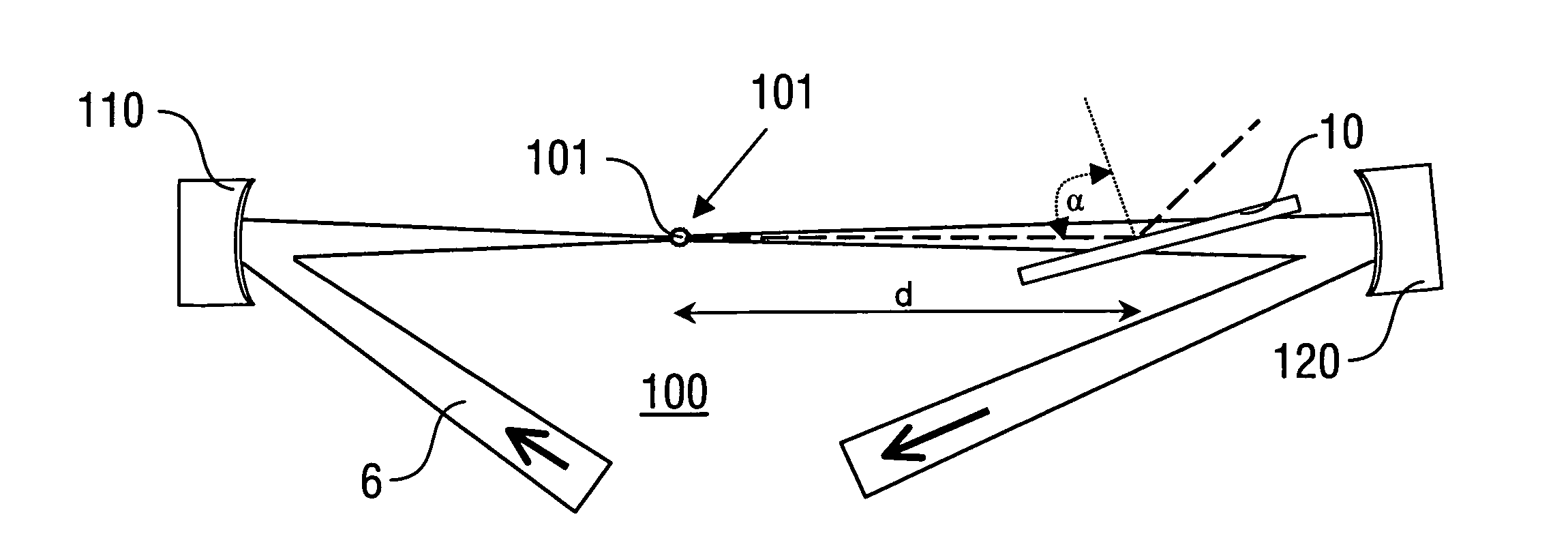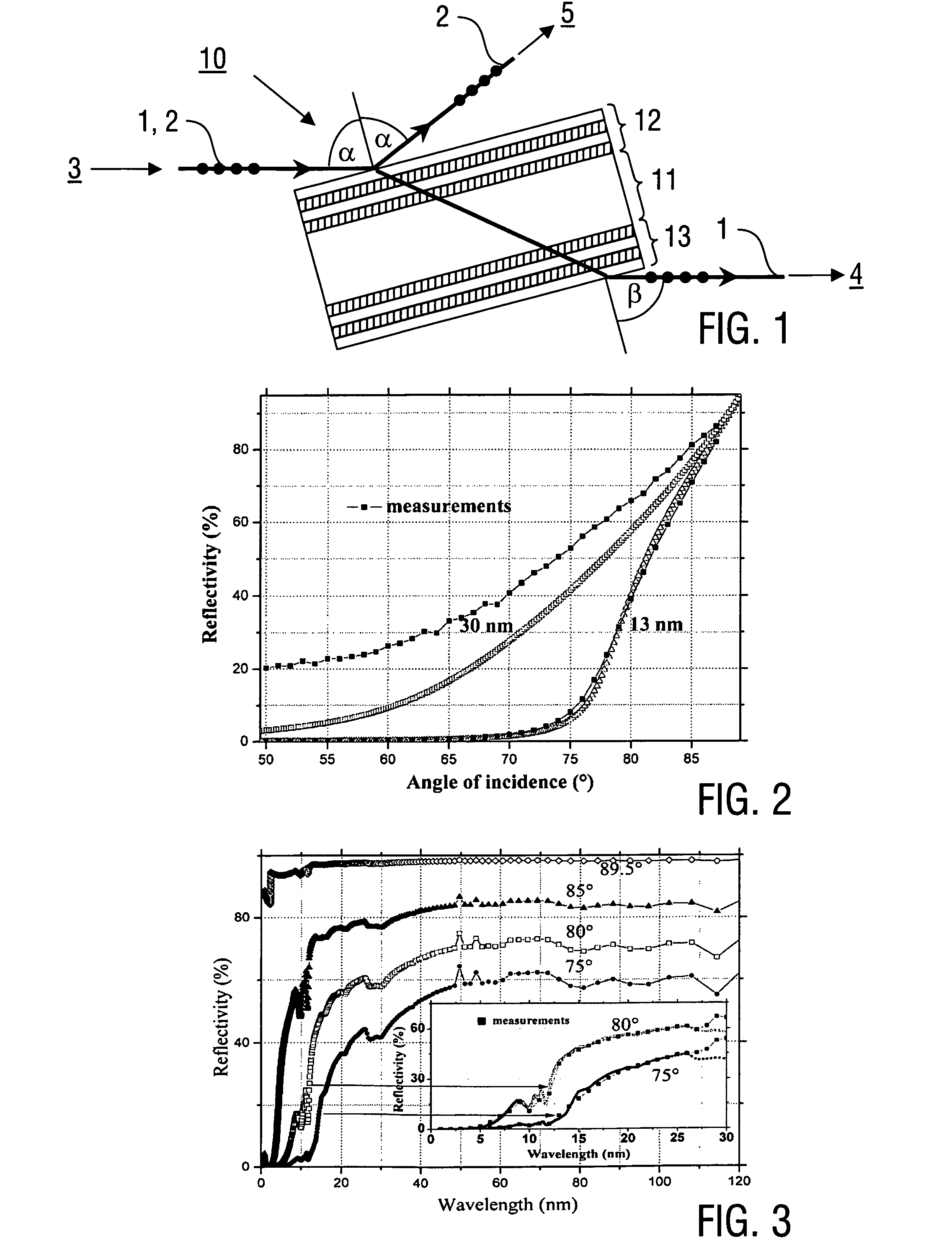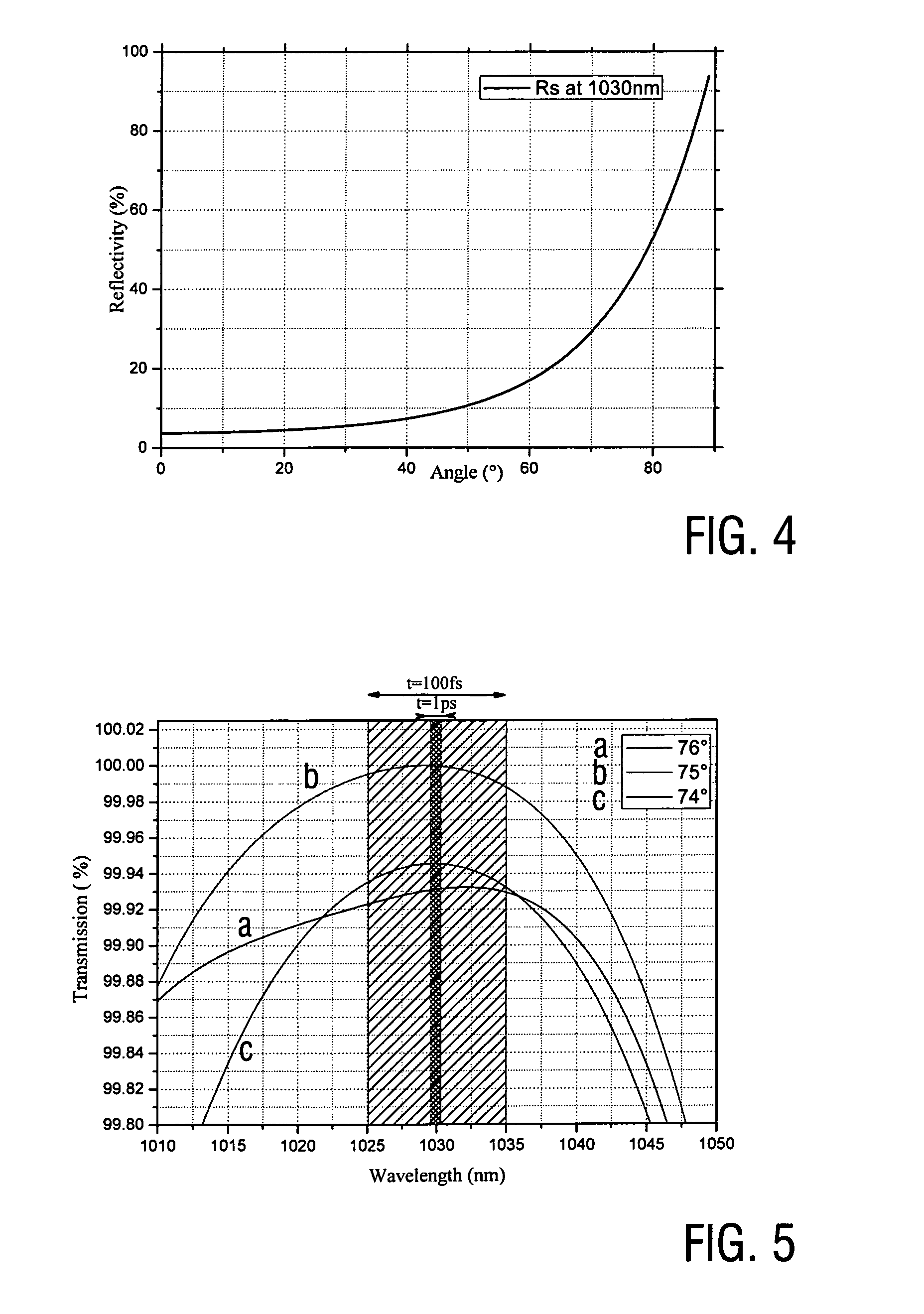Spatially relaying radiation components
a radiation component and spatial relaying technology, applied in the field of spatial relaying, can solve the problems of low xuv out-coupling efficiency of brewster plate, immediate challenge in output coupling, etc., and achieve the effect of high surface quality
- Summary
- Abstract
- Description
- Claims
- Application Information
AI Technical Summary
Benefits of technology
Problems solved by technology
Method used
Image
Examples
Embodiment Construction
[0056]Embodiments of the invention are described in the following with particular reference to the design of the optical relaying device and the application thereof, in particular for output coupling of higher harmonic radiation from an enhancement cavity. Details of the cavity design or operation, in particular the HHG process is not described as it is known as such from prior art. It is emphasized that the invention is not restricted to the enhancement cavity application but rather can be implemented in an analogue manner e.g. in a XUV, UV, or VIS output coupling device for second or higher harmonics generated inside a high-power laser oscillator cavity or for separating the XUV, UV, or VIS from the fundamental radiation in single-pass systems. Generally, the enhancement cavity approach can be applied not only for generating XUV but also for any low-efficient nonlinear process creating new spectral components that does not affect the fundamental intracavity light. Therefore, this ...
PUM
 Login to View More
Login to View More Abstract
Description
Claims
Application Information
 Login to View More
Login to View More - R&D
- Intellectual Property
- Life Sciences
- Materials
- Tech Scout
- Unparalleled Data Quality
- Higher Quality Content
- 60% Fewer Hallucinations
Browse by: Latest US Patents, China's latest patents, Technical Efficacy Thesaurus, Application Domain, Technology Topic, Popular Technical Reports.
© 2025 PatSnap. All rights reserved.Legal|Privacy policy|Modern Slavery Act Transparency Statement|Sitemap|About US| Contact US: help@patsnap.com



